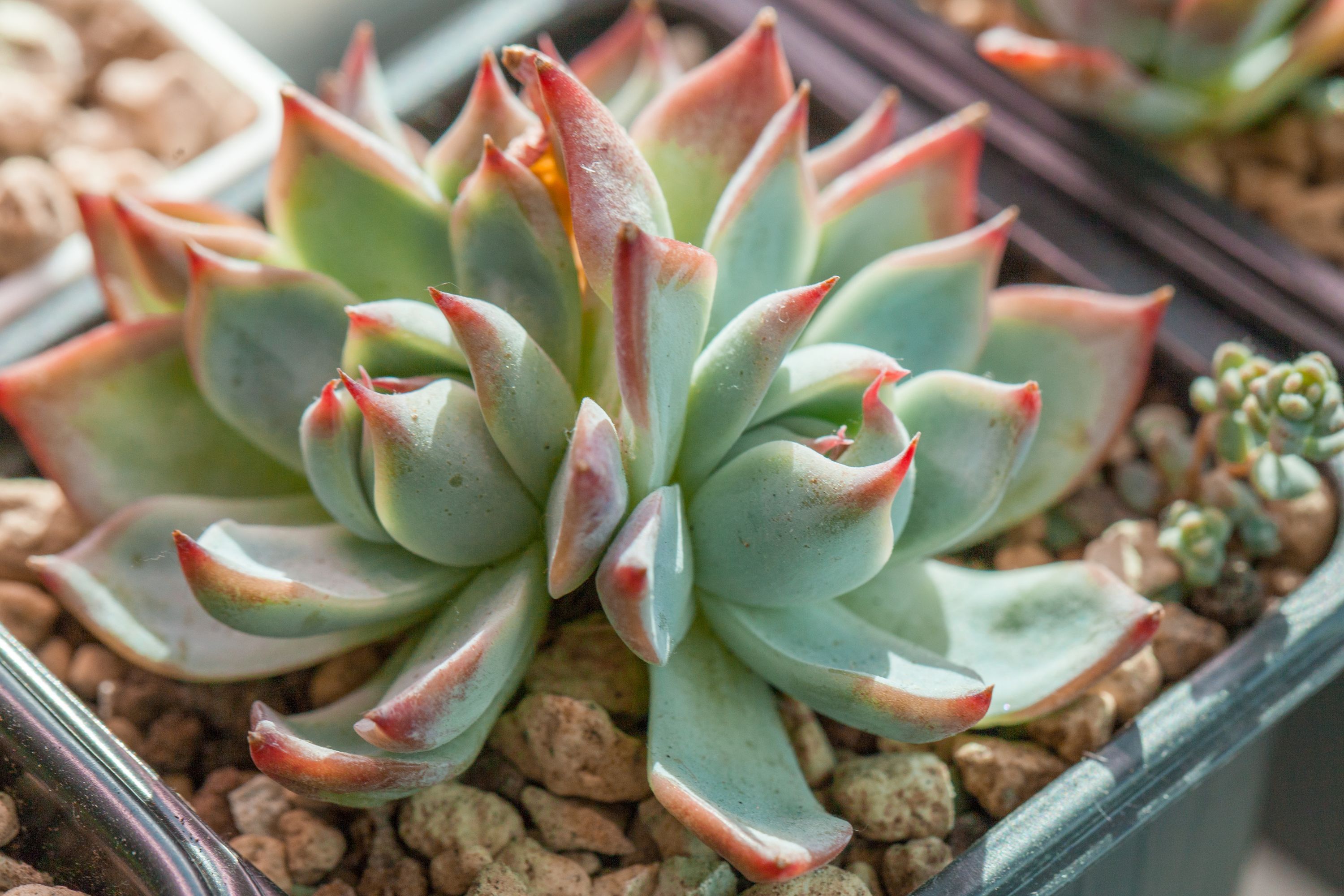Echeveria chihuahuaensis
(Echeveria chihuahuaensis)

Description
Echeveria chihuahuaensis, sometimes Echeveria chihuahuensis, is a species of perennial flowering plant in the family Crassulaceae. It is native to Mexico.It is a diploid species, with a chromosome count of 50. It is an evergreen succulent plant, resembling the closely related Echeveria colorata. Its leaves create a tightly formed rosette, spanning 10cm in diameter. The leaves are light-cyan coloured in the centre, with the pink sides. Leaf shape is either acuminate or mucronate. This is an easy way to distinguish it from E. colorata, in addition to E. chihuahuaensis having more dense rosettes. The inflorescences are scorpioid cyme which carry small, yellow flowers. These stems are usually 25cm tall. Like many other succulents that grow in intense sun, E. chihuahuaensis has a waxy coating on its leaves called the farina. This helps protect the plant from the sun. It can be rubbed off, often causing a darker color of leaf underneath. Unless severe, this normally does not affect the growth or health of the plant. This species has gained the Royal Horticultural Society's Award of Garden Merit. They are able survive temperatures as low as -3.9°C to 10°C. They should be grown in well-drained soil under full sun and not left in sitting water as this may cause the plant to rot. Dead leaves should also be removed to prevent infestation by mealy bugs. They can be propagated by seed or stem cuttings, although it is possible to use leaf cuttings. Echeveria is a large genus of flowering plants in the family Crassulaceae, native to semi-desert areas of Central America, Mexico and northwestern South America. Plants may be evergreen or deciduous. Flowers on short stalks (cymes) arise from compact rosettes of succulent fleshy, often brightly coloured leaves. Species are polycarpic, meaning that they may flower and set seed many times over the course of their lifetimes. Often numerous offsets are produced, and are commonly known as "hen and chicks", which can also refer to other genera, such as Sempervivum, that are significantly different from Echeveria. Many species of Echeveria serve important environmental roles, such as those of host plants for butterflies. For example, the butterfly Callophrys xami uses several species of Echeveria, such as Echevelia gibbiflora, for suitable host plants. Even more, these plants are integral to the oviposition process of C. xami and some other butterfly species as well.
Taxonomic tree:







